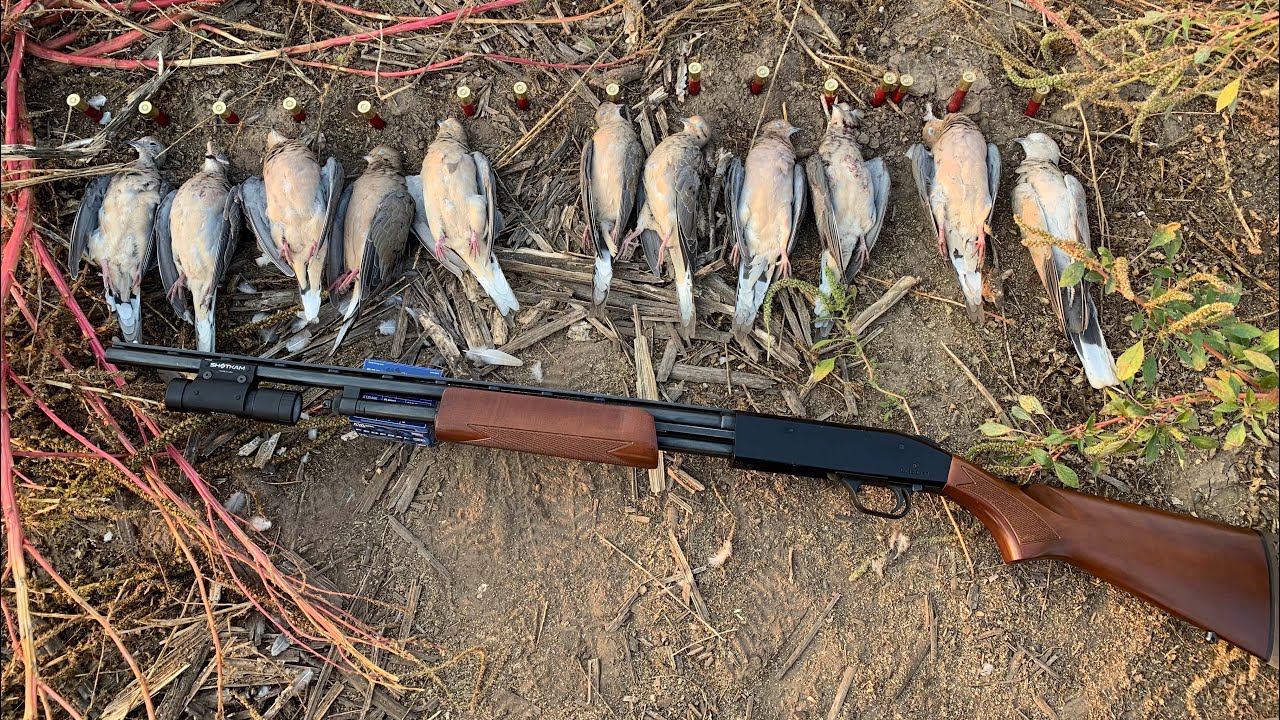
Doves play a crucial role in ecosystems, acting as both seed dispersers and prey for various predators. Their daily activities, particularly their feeding habits, contribute to the regeneration of plant life by spreading seeds across vast areas. This process benefits grasslands, forests, and agricultural fields, ensuring a diverse range of plants can thrive. Additionally, doves are a significant food source for predatory species, such as hawks, owls, and snakes, helping maintain balance in the food chain.
Despite their ecological importance, dove populations are relatively resilient due to their prolific breeding capabilities. This resilience allows them to sustain themselves even in regions where hunting is prevalent. However, the ecological impact of overhunting doves becomes apparent when populations are reduced to levels that disrupt these natural roles. For example, fewer doves in an area may result in reduced seed dispersal, which can hinder vegetation growth and affect the overall biodiversity of the region.
Positive Contributions of Regulated Dove Hunting
When managed effectively, dove hunting can have positive ecological and economic benefits. Conservation programs often rely on funds generated through hunting licenses and equipment taxes, channeling these resources into habitat restoration and wildlife management projects. These initiatives not only benefit dove populations but also enhance the broader ecosystems they inhabit. For instance, creating and maintaining wetlands, grasslands, and forested areas ensures that doves and other wildlife have access to suitable habitats.
Additionally, regulated dove hunting can prevent overpopulation, a situation that can arise in areas with abundant food and limited natural predators. Overpopulated dove populations can strain local resources, damaging crops and outcompeting other species for food. By controlling population numbers, hunting helps maintain balance within ecosystems, ensuring resources are not overly depleted.
Dove hunting also fosters a sense of community and responsibility among hunters, encouraging them to actively participate in conservation efforts. Many hunters contribute to habitat restoration projects and support scientific research on wildlife management. This collaborative approach demonstrates how human activities, when guided by ethical practices and regulations, can align with ecological preservation goals. In this way, the ecological impact of dove hunting becomes a driving force for sustainability rather than a source of harm.
Negative Consequences of Overhunting
While regulated dove hunting has its benefits, unregulated or excessive hunting poses significant risks to ecosystems. One major concern is the reduction of dove populations below sustainable levels. When too many doves are removed from an ecosystem, their seed dispersal role diminishes, leading to reduced vegetation growth. This loss of vegetation can cascade through the ecosystem, affecting herbivores that rely on plants for food and predators that depend on herbivores for sustenance.
Another issue arises when hunting activities disturb other wildlife that share habitats with doves. Noise from gunfire and the presence of hunters can disrupt the natural behaviors of animals, including nesting, feeding, and migration. These disturbances can lead to long-term changes in the composition of local wildlife populations, further altering the balance of ecosystems.
The use of lead ammunition in hunting is another concern, as it poses environmental and health risks. When lead pellets are left in the environment, they can contaminate soil and water sources, affecting a wide range of species. Birds that inadvertently ingest lead pellets while foraging can suffer from poisoning, which has cascading effects on predator populations. Addressing these issues requires a commitment to sustainable hunting practices and the adoption of environmentally friendly alternatives.
Importance of Sustainable Hunting Practices
Sustainability is key to ensuring that dove hunting does not have a detrimental ecological impact. Hunters can adopt several practices to align their activities with conservation goals. One of the most effective measures is the use of non-toxic ammunition, such as steel or bismuth pellets. These alternatives reduce the risk of environmental contamination and protect non-target species from lead poisoning.
Adhering to bag limits and hunting seasons is another critical aspect of sustainable hunting. These regulations are based on scientific research and are designed to maintain healthy dove populations. By following these guidelines, hunters can ensure they are not contributing to overhunting or population declines.
Education and awareness play a significant role in promoting sustainable practices. Sharing experiences and knowledge about ethical hunting fosters a sense of responsibility among hunters. For instance, recounting a meaningful dove hunting experience that emphasizes respect for nature can inspire others to adopt similar values. Hunters who understand the ecological consequences of their actions are more likely to prioritize sustainability and conservation.
Engaging in habitat restoration projects is another way hunters can contribute to the health of ecosystems. Planting native vegetation, preserving wetlands, and removing invasive species are examples of actions that benefit both doves and other wildlife. These efforts not only improve hunting opportunities but also enhance the overall biodiversity of the area.
Balancing Tradition and Conservation
Dove hunting is deeply rooted in cultural traditions and serves as a source of connection for many individuals and communities. However, balancing this tradition with ecological conservation requires careful consideration and collaboration. Policymakers, hunters, and conservationists must work together to develop strategies that protect ecosystems while allowing hunting traditions to continue.
One approach is to prioritize habitat preservation through funding and community initiatives. Hunting-generated revenue can be allocated to conservation projects that benefit doves and other wildlife. These projects often involve restoring degraded habitats, protecting critical nesting and feeding areas, and implementing measures to combat climate change impacts.
Public education campaigns can also help bridge the gap between tradition and conservation. By highlighting the ecological roles of doves and the importance of sustainable hunting practices, these campaigns can encourage responsible behavior among hunters. Recognizing the interconnectedness of tradition and ecology fosters a sense of shared responsibility for preserving natural resources.
In addition, research and monitoring play a vital role in maintaining balance. Scientists can track dove populations, migration patterns, and habitat use to inform management decisions. This data-driven approach ensures that regulations remain effective and adaptable to changing environmental conditions.





Leave a Reply